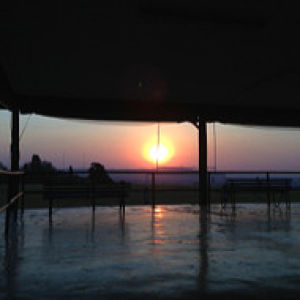Lamassu
Or sometimes known as Shedu.
Spotted on my way to meet up with some of our Millwright learners. It was on a bit of a sharp bend in the road so I had to make do with quick snaps hence the bit of reflection on the first pic.
Intrigued I did some research and found the following:
In art, lamassu were depicted as hybrids, with bodies of either winged bulls or lions and heads of human males. The motif of a winged animal with a human head is common to the Near East, first recorded in Ebla around 3000 BCE. The first distinct lamassu motif appeared in Assyria during the reign of Tiglath-Pileser II as a symbol of power.
Assyrian sculpture typically placed prominent pairs of lamassu at entrances in palaces, facing the street and also internal courtyards. They were represented as "double-aspect" figures on corners, in high relief. From the front they appear to stand, and from the side, walk, and in earlier versions have five legs, as is apparent when viewed obliquely. Lumasi do not generally appear as large figures in the low-relief schemes running round palace rooms, where winged genie figures are common, but they sometimes appear within narrative reliefs, apparently protecting the Assyrians.
They are at the entrance to a newly built house with the Iranian emblem on the stone between them.
Still intrigued to know who is going to live there.

Comments
Sign in or get an account to comment.


